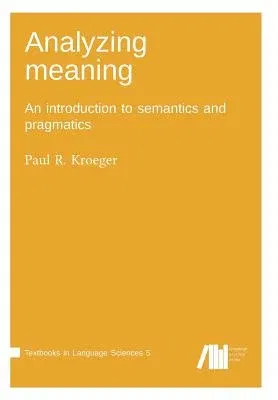This book provides an introduction to the study of meaning in human
language, from a linguistic perspective. It covers a fairly broad range
of topics, including lexical semantics, compositional semantics, and
pragmatics. The chapters are organized into six units: (1) Foundational
concepts; (2) Word meanings; (3) Implicature (including indirect speech
acts); (4) Compositional semantics; (5) Modals, conditionals, and
causation; (6) Tense & aspect. Most of the chapters include exercises
which can be used for class discussion and/or homework assignments, and
each chapter contains references for additional reading on the topics
covered. As the title indicates, this book is truly an INTRODUCTION: it
provides a solid foundation which will prepare students to take more
advanced and specialized courses in semantics and/or pragmatics. It is
also intended as a reference for fieldworkers doing primary research on
under-documented languages, to help them write grammatical descriptions
that deal carefully and clearly with semantic issues. The approach
adopted here is largely descriptive and non-formal (or, in some places,
semi-formal), although some basic logical notation is introduced. The
book is written at level which should be appropriate for advanced
undergraduate or beginning graduate students. It presupposes some
previous coursework in linguistics, but does not presuppose any
background in formal logic or set theory.


